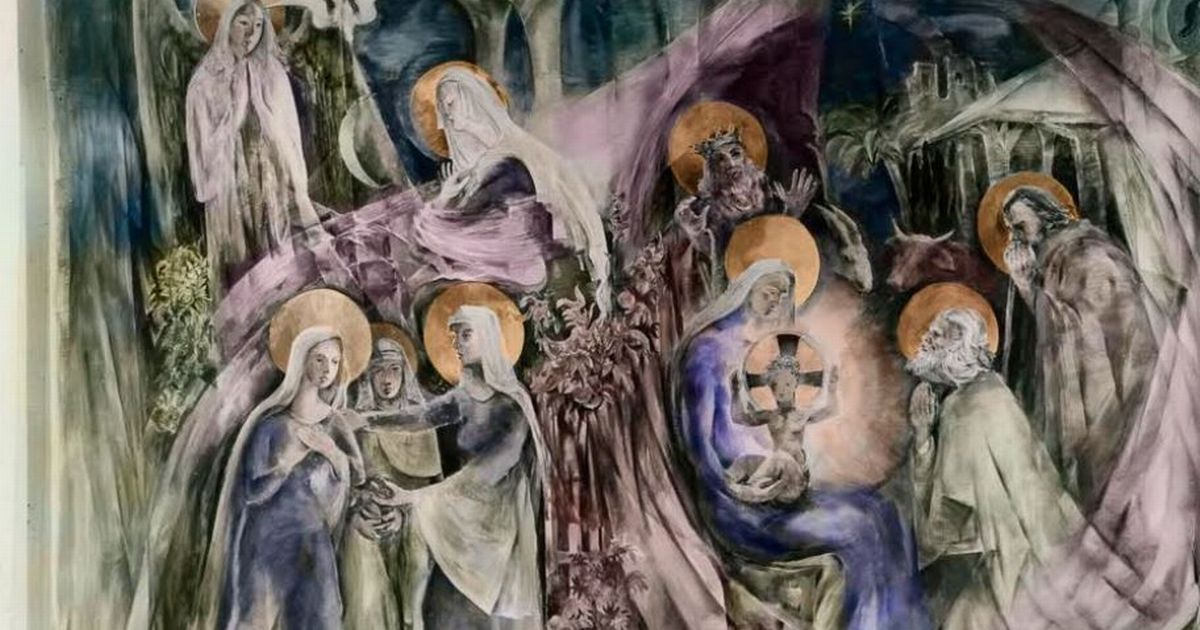The fresco from 1954, The Five Joyful Mysteries of the Virgin’s Rosary, filled a whole wall in the entrance foyer of St Ambrose Barlow RC School.
18:30, 17 Aug 2025Updated 18:32, 17 Aug 2025
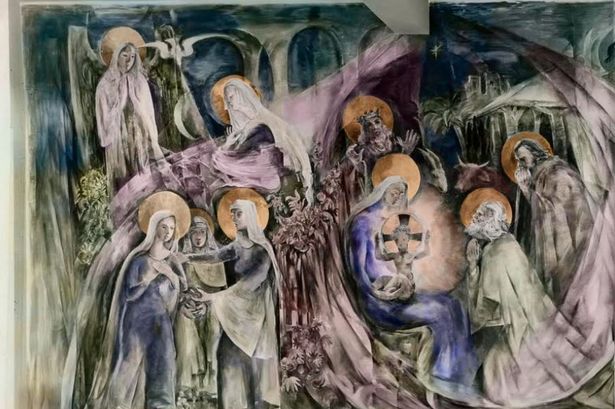 The mural by Hungarian artist, George Mayer-Marton who has been hidden from view at a school in Swinton for 30 years.
The mural by Hungarian artist, George Mayer-Marton who has been hidden from view at a school in Swinton for 30 years.
A fight to save an art masterpiece has now reached the heights of international diplomacy. It was due to be destroyed last month but the Hungarian consulate based in Manchester has now got involved.
For the best part of 30 years a beautiful fresco created by the highly regarded Hungarian artist, George Mayer-Marton has lay hidden at a school in Swinton. Inexplicably, someone decided to cover it with plaster and emulsion in the 1990s. The school has been empty for 14 years and demolition crews were due to move in on July 14th.
The fresco from 1954, The Five Joyful Mysteries of the Virgin’s Rosary, filled a whole wall in the entrance foyer of St Ambrose Barlow RC School. The building in Shaftsbury Road, is now owned by Salford city council as the school moved to a brand new site in Wardley.
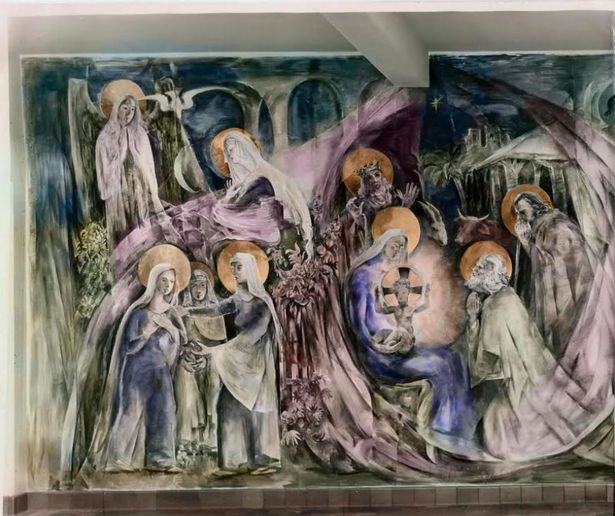 The mural by Hungarian artist, George Mayer-Marton who has been hidden from view at a school in Swinton for 30 years.
The mural by Hungarian artist, George Mayer-Marton who has been hidden from view at a school in Swinton for 30 years.
The council is to bulldoze the old school to clear the site so it can be used for affordable housing. Meanwhile the great-nephew of the artist, Nick Braithwaite, made an application for the work to be listed.
The application was fast-tracked by Historic England, the body responsible for considering the request. But last month they confirmed it had been unsuccessful – effectivley giving the green light to the wrecking ball.
But the demolition has now been stalled again after a request from the Consulate General of Hungary based in Portland Street, Manchester, who contacted Salford Council requesting that an expert be given access to the site to determine if the mural can be salvaged.
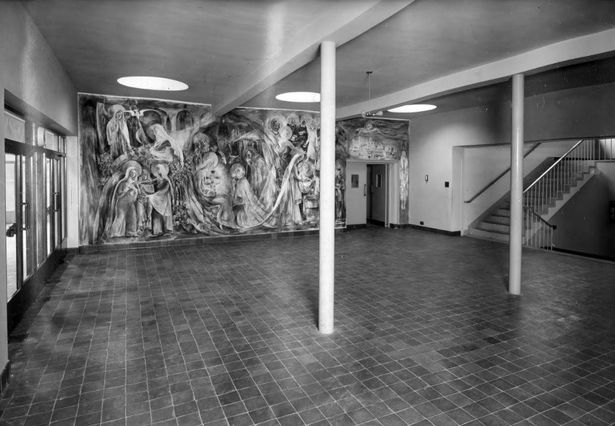 A remarkable fresco by artist George Mayer-Marton, which covered an entire wall at St Ambrose Barlow RC High in Swinton.
A remarkable fresco by artist George Mayer-Marton, which covered an entire wall at St Ambrose Barlow RC High in Swinton.
The attempts to save it have been further bolstered by correspondence being sent to Mr Braithwaite by the Museum of Fine Arts in Budapest in which a director says Mayer-Marton’s work “deserves preservation, not destruction”.
The Manchester Evening News understands the council has suggested access will be allowed in the autumn.
The council say they were unaware the mural was hidden by plaster prior to them taking responsibility for the site. In a statement the council said: “We are currently engaging with the Hungarian Consulate to look at facilitating access to the site for inspection.”
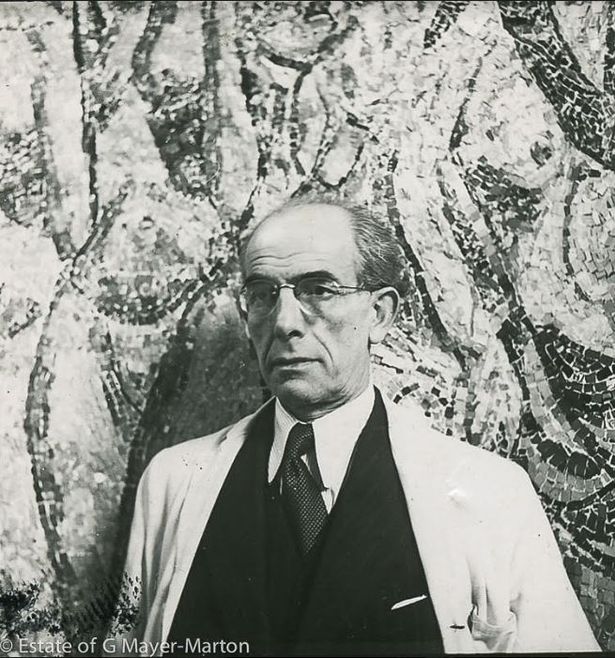 Artist George Mayer-Marton who was given commissions in Catholic churches throughout the north west in the 1950s.
Artist George Mayer-Marton who was given commissions in Catholic churches throughout the north west in the 1950s.
Mayer-Marton’s skill can also be seen in a mural, inside a church in Oldham, described by Tristan Hunt, Director of the Victoria and Albert Museum in London, as a work of “dazzling beauty”. “The Crucifixion” is in the Grade II listed Church of the Holy Rosary at Fitton Hill.
An 18-month campaign by Mr Braithwaite backed by the country’s leading heritage groups saved “The Crucifixion” made in 1955, from being lost.
The artist also produced what one critic described as ‘some of the most elegant incisive graphics in existence’ – St Clare of Assisi raising the Blessed Sacrament, a mosaic above the high altar in St Clare’s RC Church in Victoria Avenue, Blackley, Manchester.
The Victoria Gallery in Liverpool holds 20 of Mayer-Marton’s paintings in its collection. Another of George’s works, The Pentecost mosaic in Liverpool Metropolitan Cathedral was moved there just in time before its original host church, in Netherton, was demolished.
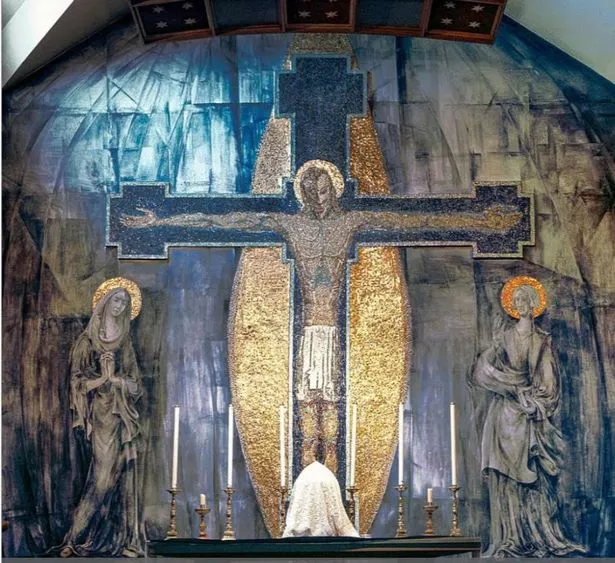 The mural of “dazzling beauty” in the closed Holy Rosary Church in Oldham. A national campaign was launched to save it.(Image: The Estate of George Mayer-Marton)
The mural of “dazzling beauty” in the closed Holy Rosary Church in Oldham. A national campaign was launched to save it.(Image: The Estate of George Mayer-Marton)
Mayer-Marton was born in Hungary in 1897, and died in Liverpool in 1960. He was a leading figure in the Viennese art world in the 1920s and 1930s.
In a letter to the council, Zsolt Petranyi, Deputy scientific director at the Museum of Fine Arts, Budapest – the Hungarian National Gallery, says: “George Mayer-Marton began his career in the 1920s with exhibitions in Budapest and, later, Vienna. During this time, he was influenced by modernist trends, evident in his paintings, which showed traces of Cubism and Futurism. His fragmented paintings created a unity between isms, resulting in widespread recognition of Mayer-Marton. However, the majority of his works were destroyed in a 1940 bombing raid, leaving only fragments of his oeuvre.
“His post-World War II works represent a mature style with their more static, figurative compositions. From the 1950s onward, he turned his attention to public spaces, exploring the genres of mosaic and fresco with renewed energy. For commissions from churches and other public institutions, he worked on religious themes that recalled the neoclassical tendencies of the 1930s in style.
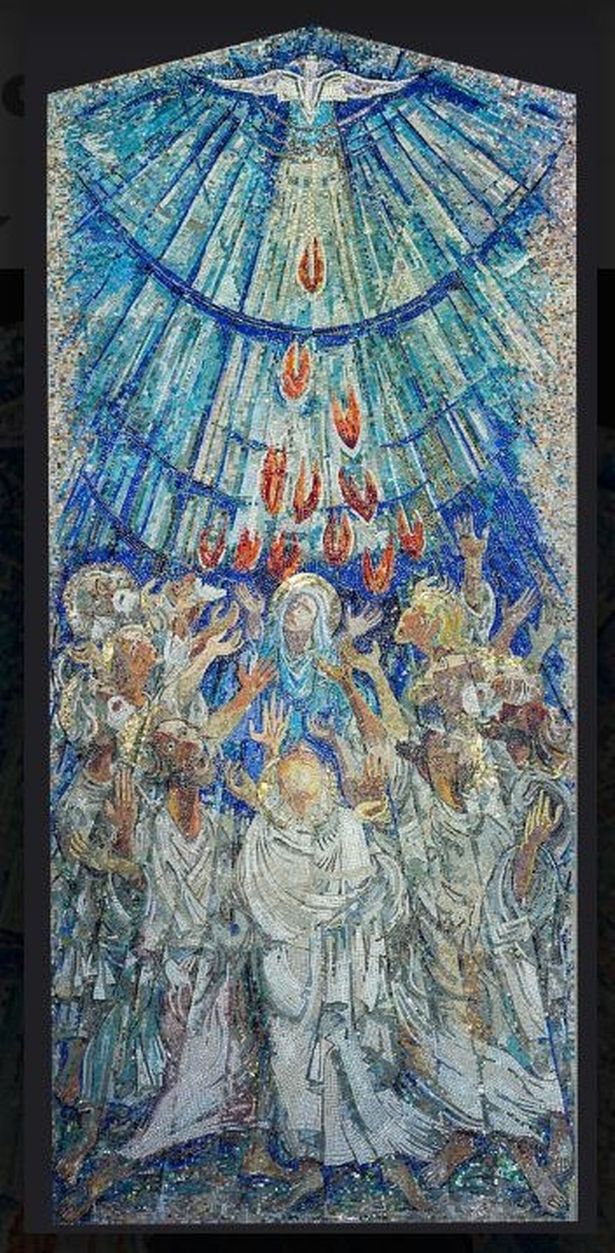 The cascades of fire on the Pentecost as depicted by artist George Mayer-Marton. This mural was saved from a church in Netherton that was demolished. It is now installed in the Liverpool Metropolitan Cathedral.
The cascades of fire on the Pentecost as depicted by artist George Mayer-Marton. This mural was saved from a church in Netherton that was demolished. It is now installed in the Liverpool Metropolitan Cathedral.
“His 1954 fresco, “The Five Joyful Mysteries of the Virgin’s Rosary,” located in Swinton, is representative of the period and exemplifies the pro-artistic attitude of public institutions and schools during the 1950s.
“In this sense, George Mayer-Marton’s work is documentary evidence that deserves preservation, not destruction. The Museum of Fine Arts, Budapest – Hungarian National Gallery recommends protecting the work in its original location.”
In a letter to deputy mayor Jack Youd, Mr Braithwaite writes as the great nephew of George Mayer-Marton and responsible for managing his estate and legacy.
He asks that the council grant access “as a matter of urgency” to the mural for a visit by a conservator. He says tests are essential in order to show whether the mural is reasonably capable of being salvaged i.e., has not already been damaged beyond repair.
What is specifically needed as a minimum is the uncovering of a 10cm square face in order to be able to raise funds for the conservator’s visit and the subsequent recovery and restoration of the mural.
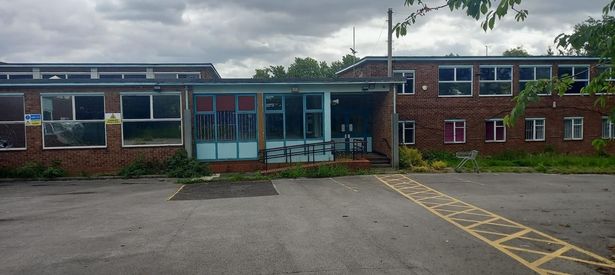 The former St Ambrose Barlow RC High School in Swinton which is scheduled to be bulldozed depsite containing a beautiful mural.
The former St Ambrose Barlow RC High School in Swinton which is scheduled to be bulldozed depsite containing a beautiful mural.
He writes: “We hope eventually to find a solution which can reconcile the survival of the mural with the Council’s legitimate plans and obligations.”
“I say this without recrimination because I understand the Diocese, not the Council, was responsible for covering the mural – an appalling Philistine act – but I must say in no uncertain terms that this is a critical point in the unfortunate history of this artwork, at which the Council in my view has a historic responsibility.”
Mayer-Marton, a Hungarian Jewish artist working in Vienna, was a victim of Nazi persecution, who fled to England in 1938. Almost all his life’s work was destroyed in the Blitz, when an incendiary bomb dropped by the Luftwaffe was a direct hit on his London home. He lost three family members in the Holocaust.
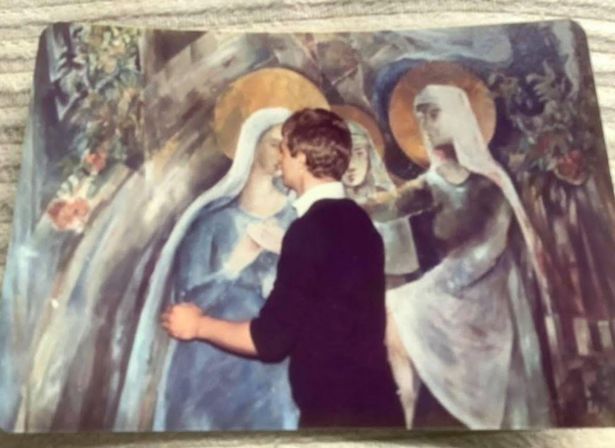 A photograph of George Mayer-Marton’s fresco at St Ambrose Barlow RC High in Swinton.
A photograph of George Mayer-Marton’s fresco at St Ambrose Barlow RC High in Swinton.
Mr Braithwaite adds: “Yet he managed to rise from these tragic events to resurrect his career, of which the crowning achievement was the making of a series of murals in the Northwest. The importance of these works has recently received widespread recognition.
The Swinton mural is one of four surviving murals by Mayer-Marton and the only complete fresco work. The mural in Oldham was listed at Grade II by Historic England in 2023 after facing demolition by the Diocese of Salford.”
He said the letter from the Museum of Fine Arts in Budapest indicated the “international artistic significance of the work, which is a sister work to the listed mural in Oldham, and to the two other surviving mosaics in Liverpool and Blackley..”
The Manchester Evening News understands that Mr Braithwaite and a former teacher at St Ambrose had requested the conservator be allowed access on August 7th but that was not facilitated.
Mr Braithwaite says in his letter: “It is clearly the right thing to do, given the demonstrated importance of the work nationally and internationally, and its significance in the output of a racially persecuted artist.”
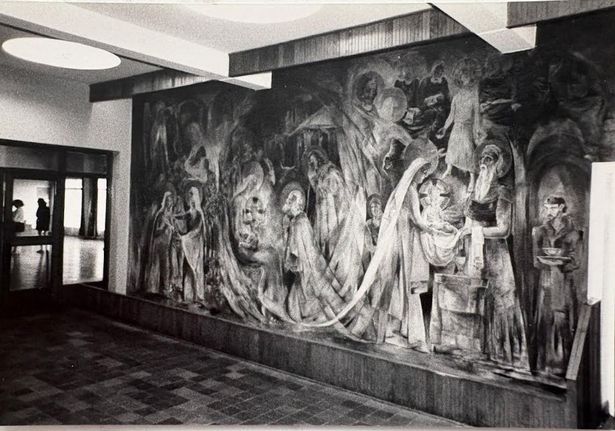 How the mural looked in the foyer of St Ambrose Barlow RC High in Swinton.
How the mural looked in the foyer of St Ambrose Barlow RC High in Swinton.
Mayer-Marton and his wife escaped to Britain in 1938, where he began working as a lecturer for CEMA, the predecessor of the Arts Council.
In 1952 he was appointed as a lecturer at the Liverpool College of Art. There he established the Department of Mural Art. The course in this technique which he instigated at the College was the first of its kind in the UK.
During his time at the college Mayer-Marton completed more than 200 oil paintings and he was commissioned by the Roman Catholic Church to carry out works at a number of churches in Lancashire and Cheshire.
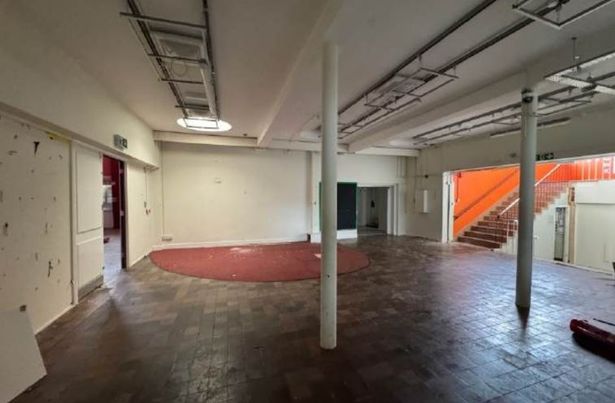 How the foyer of the former St Ambrose Barlow RC High looks now – with the fresco covered by emulsion and plaster.
How the foyer of the former St Ambrose Barlow RC High looks now – with the fresco covered by emulsion and plaster.
The current head of St Ambrose Barlow Catholic High School, Ben Davis, became aware of the mural’s existence while researching the history of the school for its 70th anniversary. He said: “We came across a photograph of the foyer of the school, which showed the mural. I said to people ‘what is that’ it is huge. I started asking what had happened to it. I gradually pieced together that it looked like it had been covered up in the mid 1990s. The bottom line is it should never have been covered up.”
